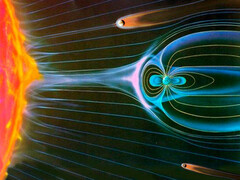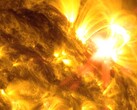It is well known that the sun's interior is bubbling over with millions of degrees and nuclear fusion. This repeatedly results in gigantic eruptions, which primarily hurl plasma towards the Earth at speeds of up to 3 million miles per hour.
Although the sun has been observed for thousands of years, and even quite accurately since around 1900, it was and still is almost impossible to predict such eruptions on the sun and the associated solar storms.
They do occur more frequently when a new solar cycle begins, i.e. when the sun's magnetic field reverses. And one such cycle, the 25th documented cycle, is beginning right now and is expected to reach its peak in mid-2025.
Nevertheless, a violent solar storm can be triggered at any time, which in the best-case scenario will cause spectacular northern lights as far as Maine or Vancouver. In the worst case, however, it could interrupt satellite navigation and thus disrupt air traffic or break up mobile communications.
The Solar Orbiter cannot prevent this, but the forecasts for our local space weather should be much more reliable and also be able to extend further into the future - from a few days at present to several weeks. The current weather report can be found at here.
The Solar Orbiter satellite will be sent to the L5 Lagrange point of the Earth and the Sun. It is in the same path like Earth, but 60 degrees further than the Earth currently is.
In this relatively stable position, in equilibrium between the two celestial bodies, the camera system is looking at a part of the sun that will not rotate in our direction until later.
In this way, emerging eruptions can be recorded and analyzed. Well before the actual eruption, calculations can be made as to exactly how strong and in which approximate direction the solar storm is heading. Space weather forecasting should be significantly improved.
In the following video, ESA presented the mission that has now been launched four years ago.
















